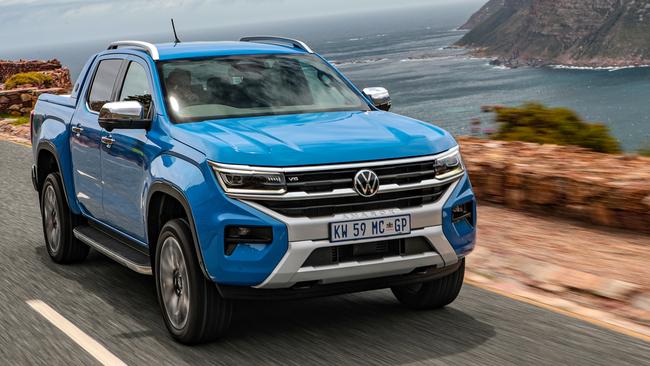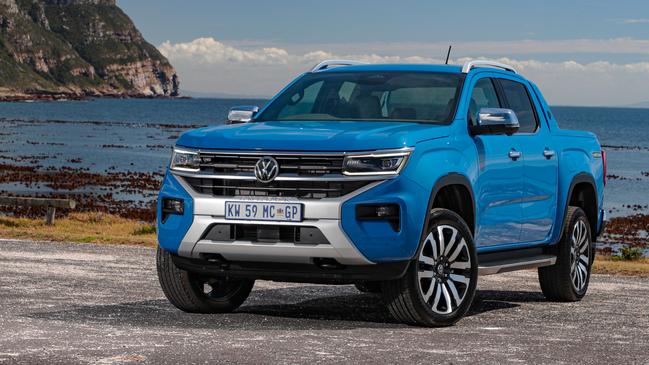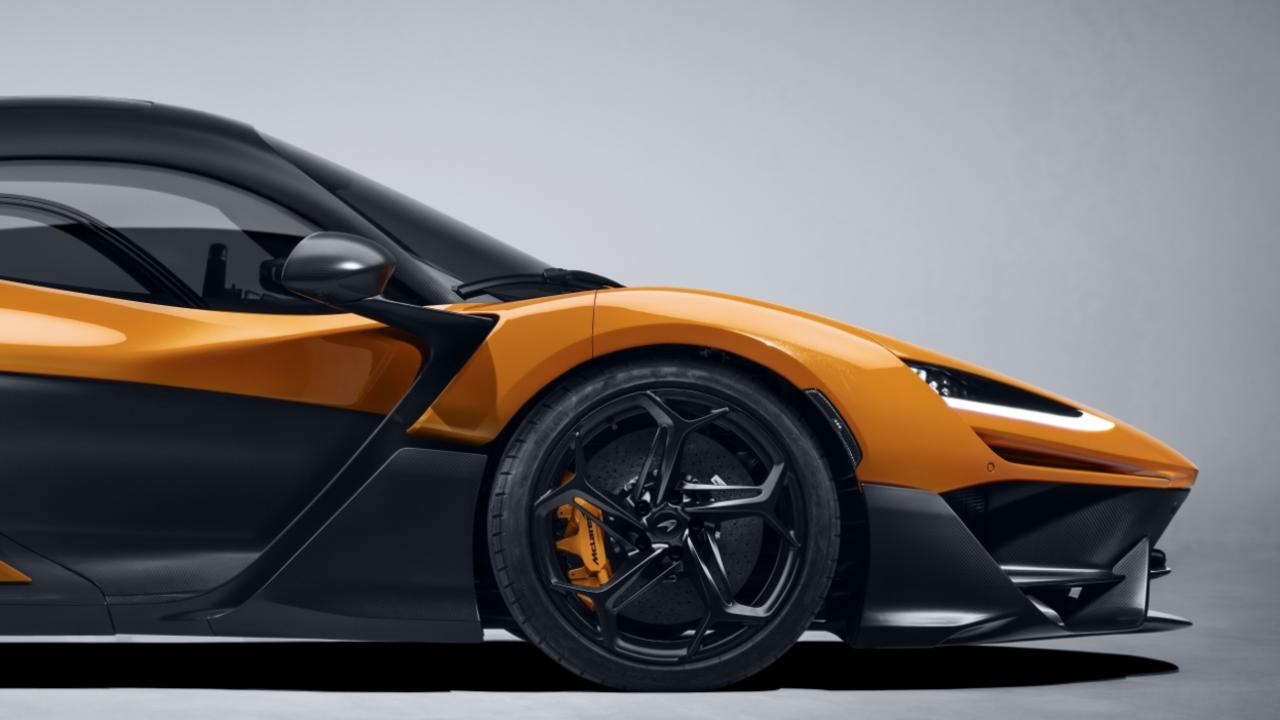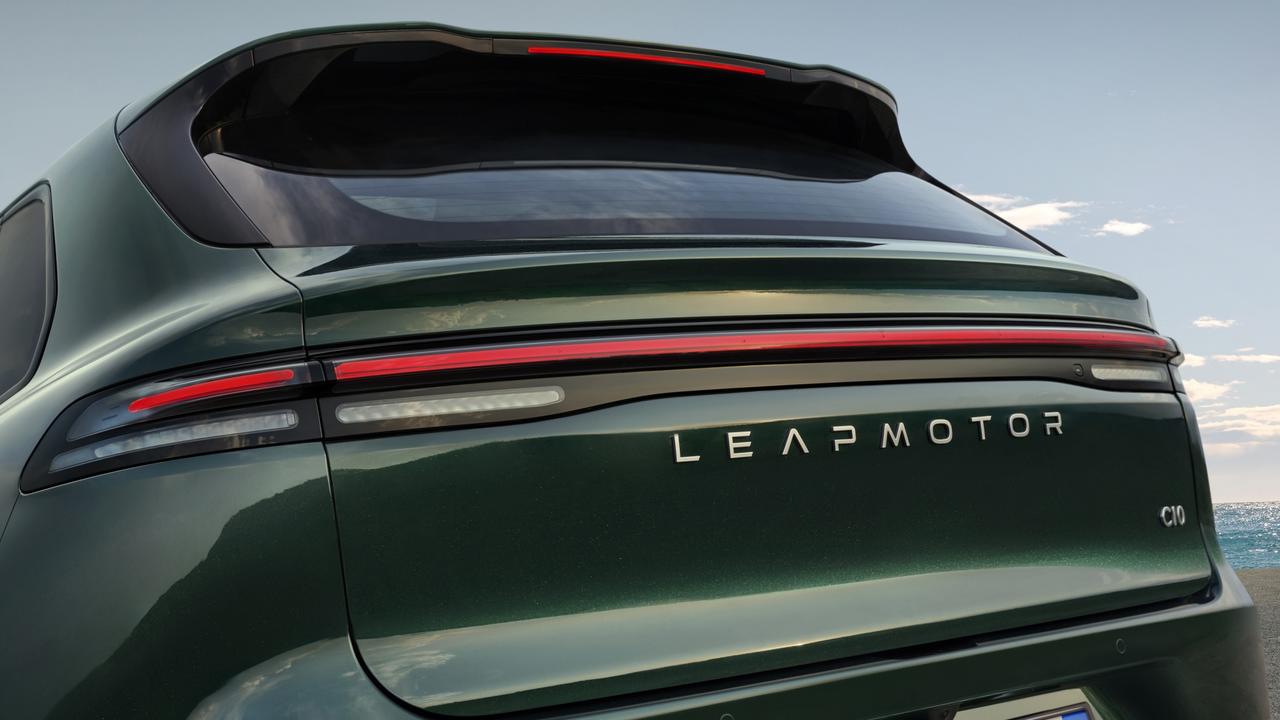Volkswagen Amarok review: HiLux rival has Aussie connection
Ford and Toyota have been locked in a battle for sales supremacy in the ute market for several years, but this newcomer could throw a spanner in the works.

New Cars
Don't miss out on the headlines from New Cars. Followed categories will be added to My News.
Volkswagen’s second-generation Amarok has a unique connection with Down Under.
The ute shares its underpinnings and engines with the Ford Ranger, which was designed and engineered in Victoria.
Volkswagen had 20 engineers embedded within the Ford Australia project, although the two teams went their separate ways when it came to design.
The roof is the only body panel shared between the two and the Amarok eschews overt brawn for a more up-market look and feel.
Brushed metal finishes and interesting leather touches raise the cabin ambience to new levels for a ute. Volkswagen developed its own seat cushioning with more prominent bolsters and its leather-wrapped steering is more convincing than the Ranger’s.

There are similarities, though, including some switches, door handles and the electronic gear selector that is clunky to operate.
The portrait-oriented centre touchscreen is also shared with Ford, although as with the digital driver display, Volkswagen designed its own graphics.
Some details aren’t as user-friendly as they could be, though. Adjusting the temperature requires multiple touches of the screen, for example.
The new Amarok is a huge step up on its predecessor. Its longer body liberates more rear legroom and there are rear air vents for the first time.
Safety is now equal best in class. Curtain airbags have finally been added and there’s now a centre front airbag, as well active safety systems such as auto emergency braking.

The work-focused Core model has vinyl floors and black bumpers, but there’s wireless phone charging and 17-inch alloys. For now it only gets a single turbo diesel four-cylinder with modest 125kW/405Nm outputs and there’s no blind-spot warning.
That comes on the Life, which is powered by a 155kW/500Nm twin-turbo four-cylinder diesel and has tinted windows and coloured bumpers.
The Style that replaces the Highline has a larger 12-inch infotainment screen and broader 12-inch instrument cluster, as well as heated front seats, a powered driver’s seat, smart-key entry, ambient lighting, dual-zone ventilation and 18-inch wheels. There’s also a bed liner for the load area, a chrome sports bar and matrix LED lights. A V6 diesel is an option.
The V6 diesel-only PanAmericana looks tougher with black highlights, 18-inch alloys, a unique front bumper, LED tail-lights and leather extending to the dash.

The Aventura has 21-inch wheels, Savona leather, a sailplane and an electric roller cover. It is available with the V6 diesel or a 222kW/452Nm 2.3-litre four-cylinder turbo petrol engine, giving Volkswagen a unique selling point in the ute market.
The Ford-sourced V6 diesel has 184kW, which is 16kW less than Volkswagen’s previous V6. However, torque is up 20Nm to 600Nm and there are now 10 gear ratios.
The new 3.0-litre engine feels marginally less enthusiastic, as the additional weight of the bigger body takes its toll.
It earns points back with excellent refinement, though. There’s an effortless surge that never sounds strained and while the auto occasionally fumbles at low speeds its wide spread of ratios helps with solid performance.

A permanent four-wheel drive system makes getting thrust to the road easier, although the heft challenges the front wheels for traction if you attack a tight bend.
Four-cylinder versions have lost that ability to have all four wheels driven on bitumen. Volkswagen believes the addition of a low-range transfer case – for slow-speed rock crawling – is an adequate compromise.
Our sample of the new Amarok in South Africa – where it will also be built – included limited off-road driving but it was enough to learn it will be as capable as its main rivals.
On road, the 20-inch tyres on the PanAmericana made the ride bumpy at moderate speeds, taking the edge off its softer suspension tune.

We briefly sampled a Style on 18-inch tyres and it was noticeably less fidgety.
The Aventura goes the other way, the lower profile tyres and firmer road-focused tune picking up repeated fine bumps. But its meaty steering feel and surefootedness through corners puts it at the pointy end of the ute market dynamically.
Volkswagen hasn’t announced pricing but says the Amarok will carry a premium, suggesting prices kicking off at about $55,000 drive-away. The PanAmericana is likely to cost more than $80,000 and the Aventura will inch above that.
The volume-selling Style will likely be in the mid-$70,000 range, with another few grand for the V6. But there’s enough substance and some European design flair to justify the ask.
Originally published as Volkswagen Amarok review: HiLux rival has Aussie connection


